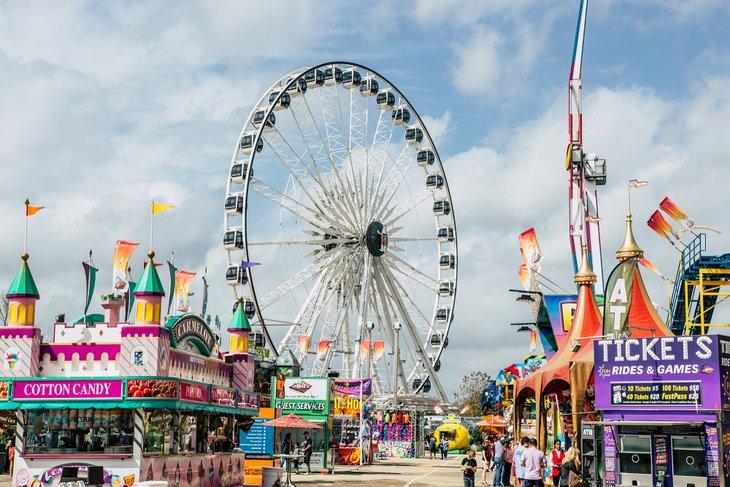Houston’s Vision for a Signature Waterfront Park: Uniting Community and Culture
Houston’s Call for a Distinctive Waterfront Oasis to Enrich Tourism and Local Life
Across Houston, residents are increasingly advocating for the creation of a landmark waterfront park that would revitalize the city’s underused bayou and riverfront corridors. This proposed green space aims to become a vibrant communal hub, blending natural beauty with recreational amenities to attract both locals and tourists. By transforming these neglected areas into inviting environments featuring scenic trails, picnic areas, and cultural exhibits, the park would foster a deeper connection between Houstonians and their environment while strengthening community bonds.
Suggested features by community members include:
- Outdoor amphitheater hosting concerts and neighborhood events
- Facilities for water-based activities like paddleboarding and kayak rentals
- Safe, engaging playgrounds and family-oriented zones
- Public art installations celebrating Houston’s multicultural heritage
- Farmers’ markets spotlighting local food artisans and vendors
| Anticipated Advantages | Expected Outcomes |
|---|---|
| Economic Growth | Surge in tourism spending and new employment opportunities |
| Enhanced Lifestyle | Expanded outdoor activities and stronger neighborhood ties |
| Cultural Celebration | Showcasing Houston’s rich diversity and artistic expression |
Urban Development Experts Advocate for a Signature Green Space to Drive Houston’s Growth
City planners and cultural analysts agree that a prominent urban park would act as a powerful engine for Houston’s economic vitality and social cohesion. Research consistently shows that well-designed green spaces not only attract visitors but also stimulate local businesses and elevate property values, creating a thriving urban ecosystem. Such parks serve as natural gathering points where residents can engage in cultural activities, enjoy nature, and participate in community events.
Beyond economic benefits, experts envision this park as a cultural landmark that embodies Houston’s identity. Incorporating elements like interactive botanical gardens, open-air performance venues, and multicultural exhibition spaces would provide a dynamic platform for celebrating the city’s heritage and promoting environmental stewardship. This approach aligns with contemporary urban design trends that prioritize sustainability and inclusivity.
Strategic Framework and Funding Approaches Proposed by Houston’s Community Leaders
Leaders from Houston’s diverse communities have crafted comprehensive plans to address the absence of a major cultural and recreational landmark. Their vision emphasizes multifunctional spaces that integrate entertainment, education, and green infrastructure, aiming to boost tourism and nurture civic pride. To ensure the project’s success and longevity, they propose collaborative funding models involving private investors, city officials, and nonprofit organizations, learning from previous stalled efforts.
Core elements of the proposed strategy include:
- Public-Private Partnerships: Leveraging tax incentives and sponsorships to attract investment and expertise.
- Community-Centered Design: Prioritizing accessibility and cultural representation through ongoing resident input.
- Diverse Funding Streams: Utilizing crowdfunding platforms and applying for grants to supplement traditional financing.
| Funding Source | Projected Amount | Anticipated Impact |
|---|---|---|
| Private Sector Investors | $55 million | Faster completion and innovative features |
| Municipal Bonds | $35 million | Development of infrastructure and public amenities |
| Community and Cultural Grants | $12 million | Inclusive programming and outreach initiatives |
Lessons from Other Metropolises: How Signature Parks Amplify City Identity
Major cities such as Boston, Seattle, and Atlanta exemplify how iconic urban parks can significantly enhance a city’s reputation and livability. For instance, Boston’s Emerald Necklace offers a network of green spaces that blend natural beauty with historical landmarks, drawing millions annually for recreation and cultural events. Similarly, Seattle’s Gas Works Park provides a unique waterfront experience with panoramic views and community gatherings, while Atlanta’s Piedmont Park hosts festivals and outdoor activities that celebrate the city’s spirit.
Houston, with its sprawling urban landscape and multicultural population, stands to gain substantially from a comparable landmark park. Such a space would serve multiple functions:
- Attracting visitors by establishing a must-see destination.
- Stimulating economic activity through increased patronage of local businesses.
- Enhancing residents’ well-being by offering diverse recreational opportunities year-round.
- Encouraging community participation via cultural festivals and civic programs.
The absence of a defining urban park leaves Houston at a disadvantage compared to peer cities that have successfully integrated such spaces into their urban fabric, boosting their national and international profiles.
Conclusion: Houston’s Opportunity to Cultivate a Unifying Urban Landmark
As Houston continues to grow as a dynamic and diverse city, the collective call from its residents for a signature waterfront park underscores a desire for a unifying cultural and recreational asset. Whether city officials and stakeholders will act on this vision remains uncertain, but the enthusiasm among Houstonians is unmistakable. This dialogue highlights that a city’s progress is measured not only by economic indicators or skyline developments but also by the shared spaces that nurture community spirit and celebrate local identity.




